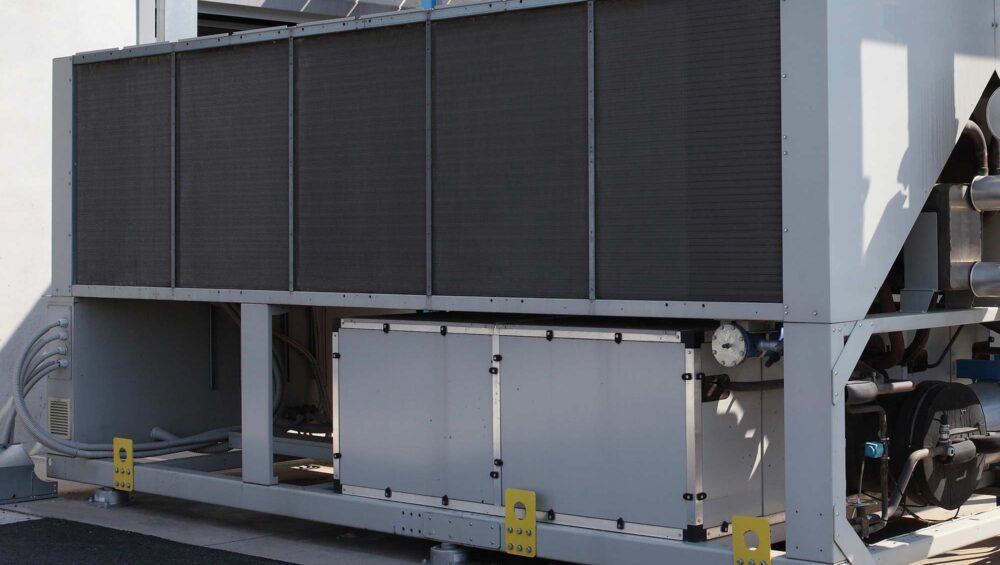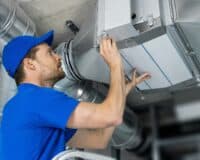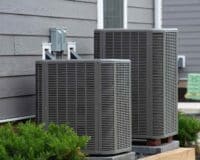As the temperature rises and the days grow longer, ensuring your home remains cool and comfortable becomes a top priority during the spring and summer months. Behind the scenes of your HVAC system lies a crucial component responsible for delivering refreshing air throughout your home: the air handler unit. While often overlooked, the air handler plays a vital role in maintaining indoor comfort by circulating conditioned air and regulating temperature and humidity levels. In this comprehensive guide, we’ll uncover the inner workings of an air handler unit, explore its key components, and delve into how it keeps your home cool and comfortable all season long.
Understanding the Air Handler Unit
Before we dive into its functionality, let’s demystify the air handler unit. Essentially, the air handler serves as the heart of your HVAC system, responsible for distributing conditioned air throughout your home via ductwork. It typically consists of a blower, evaporator coil, air filter, and housing enclosure, all working seamlessly together to regulate indoor climate control.
1. Blower Assembly: The Powerhouse of Air Circulation
At the core of the air handler unit lies the blower assembly, a powerful fan responsible for circulating air throughout your home. When your thermostat signals a need for cooling, the blower kicks into action, drawing warm air from your living spaces into the air handler unit. Once inside, the air passes over the evaporator coil, where it undergoes the cooling process before being redistributed back into your home as refreshing, conditioned air. Without the blower’s relentless circulation, achieving consistent indoor comfort would be nearly impossible.
2. Evaporator Coil: Cooling Efficiency at Its Finest
The evaporator coil serves as the cooling powerhouse within the air handler unit, facilitating the heat exchange process that transforms warm indoor air into cool, comfortable temperatures. As warm air passes over the evaporator coil, refrigerant inside the coil absorbs heat from the air, causing it to cool and dehumidify. This chilled air is then distributed back into your home, while the absorbed heat is transferred to the refrigerant and expelled outside through the condenser unit. The evaporator coil’s efficient heat exchange capabilities are essential for maintaining comfortable indoor temperatures, even on the hottest of days.
3. Air Filter: Purifying Indoor Air Quality
In addition to regulating temperature, the air handler unit plays a crucial role in enhancing indoor air quality through its integrated air filtration system. The air filter, located within the air handler housing, traps dust, pollen, pet dander, and other airborne particles as air passes through the unit. By capturing these contaminants, the air filter helps purify the air circulating throughout your home, reducing allergens and improving respiratory health. Regular replacement of the air filter is essential to ensure optimal filtration efficiency and maintain clean indoor air quality.
4. Housing Enclosure: Protecting Vital Components
Surrounding the internal components of the air handler unit is the housing enclosure, a protective casing designed to safeguard the unit’s vital components from external elements and debris. The housing enclosure also helps dampen noise generated by the blower and internal components, ensuring quiet operation and minimal disruption to your home environment. Additionally, the housing enclosure provides easy access for maintenance and servicing, allowing HVAC technicians to perform routine inspections and repairs as needed.
How Does an Air Handler Unit Keep Your Home Cool and Comfortable?
Now that we’ve explored the key components of an air handler unit, let’s delve into how it works tirelessly to keep your home cool and comfortable throughout the spring and summer months:
1. Efficient Air Circulation:
The blower assembly continuously circulates air throughout your home, ensuring consistent airflow and temperature distribution in every room.
By recirculating indoor air, the air handler helps maintain a comfortable environment while minimizing energy consumption and utility costs.
2. Precise Temperature Control:
The evaporator coil’s cooling capabilities allow the air handler to regulate indoor temperatures to your desired comfort level.
By removing heat and humidity from indoor air, the air handler creates a refreshing and comfortable living environment, even on the hottest days.
3. Enhanced Indoor Air Quality:
The integrated air filtration system captures airborne contaminants, including dust, pollen, and allergens, improving indoor air quality and respiratory health.
By removing pollutants from the air, the air handler helps create a cleaner, healthier living space for you and your family to enjoy.
4. Quiet and Reliable Operation:
The housing enclosure dampens noise generated by the blower and internal components, ensuring quiet operation and minimal disruption to your home environment.
With regular maintenance and servicing, the air handler operates reliably and efficiently, providing uninterrupted comfort throughout the spring and summer seasons.
When to Consider Air Handler Replacement
While air handler units are built to last, there may come a time when replacement becomes necessary to maintain optimal performance and efficiency. Here are some signs that indicate it may be time to consider air handler replacement:
1. Age:
If your air handler unit is approaching or exceeding its expected lifespan (typically 10-15 years), it may be more prone to breakdowns and inefficiencies.
Upgrading to a new, energy-efficient air handler can improve performance, reduce energy consumption, and lower utility costs in the long run.
2. Decreased Performance:
If you’ve noticed a decline in cooling performance, uneven temperatures, or increased energy bills, it may be a sign that your air handler is struggling to keep up with demand.
Upgrading to a more advanced air handler with modern features and technologies can enhance comfort and efficiency while minimizing energy consumption.
3. Frequent Repairs:
If your air handler requires frequent repairs or is experiencing recurring issues, it may be more cost-effective to invest in a new unit rather than continually repairing an aging system.
Upgrading to a new, reliable air handler can provide peace of mind and long-term savings on maintenance and repair costs.
4. Outdated Technology:
If your current air handler lacks modern features such as variable-speed motors, programmable thermostats, or advanced filtration systems, it may be time for an upgrade.
Upgrading to a new, technologically advanced air handler can improve comfort, indoor air quality, and overall system performance.
Conclusion
The air handler unit plays a crucial role in keeping your home cool and comfortable throughout the spring and summer months. By circulating conditioned air, regulating temperature and humidity levels, and enhancing indoor air quality, the air handler creates a refreshing and inviting living environment for you and your family to enjoy. Understanding the inner workings of the air handler unit and knowing when it’s time for replacement can help you maintain optimal comfort and efficiency in your home, ensuring a cool and comfortable retreat from the heat all season long.



